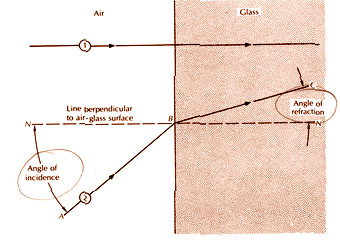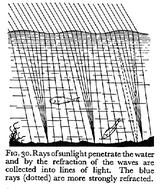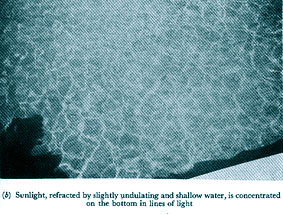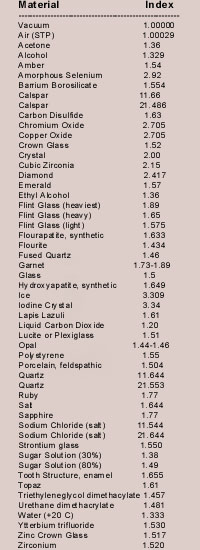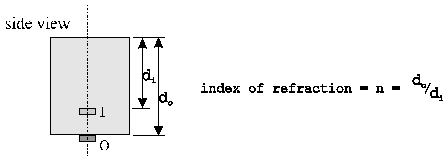| Refraction
Refraction is bending of light that occurs at interface between 2 media. The angle of refraction depends on the angle of incidence and the difference between the 2 media. When the incident ray is perpendicular to the surface, no refraction occurs and the ray passes straight through the second medium.
|
| Example: Bending light with a prism. Not all wavelengths are refracted equally. 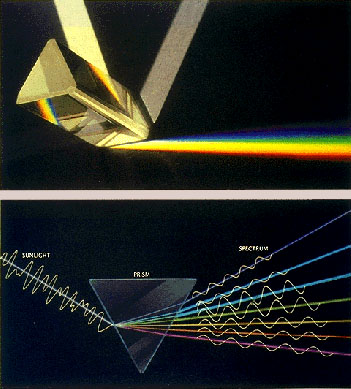 |
| Refraction is what gives rise to the shimmering bands of light often seen in the bottom of shallow pools of water.
|
Index of Refraction
|


